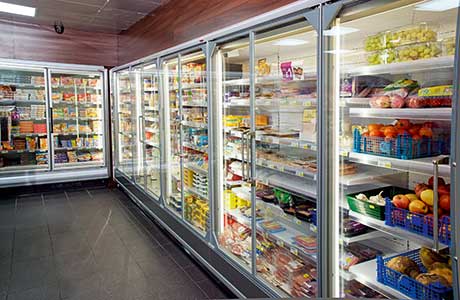EFFICIENT refrigeration makes sense on every level. Craig Pringle, of Eco Refrigeration, spends every day discussing freezers and chillers with c-store owners across Scotland and reports that, while sales used to be driven solely by price, his customers now see the benefits of paying more for energy efficiency.
The numbers, he says, speak for themselves. “A traditional open-fronted multi-deck unit used a lot of energy. Basically, that fridge was trying to chill the whole shop. Whereas a unit with a double-glazed glass door will reduce energy costs by 50-60% over a 24-hour period.”
With rising electricity prices showing no sign of slowing down, he stresses that switching to refrigeration that costs pennies, not pounds, a day to run can make a significant difference. “We have spreadsheets showing the different costs of electricity. If a business can save £2-300 a month, that’s a big saving.”
He appreciates that the up-front costs can look scary. But he stresses that there are grants and tax benefits available to help with the initial financial pain. (See ECA panel, below.) The retailer will make back the extra cost of buying a unit with double-glazed doors over two-to-three years. The unit will last for 10 years.
It is also possible to lease the equipment over three or four years, to avoid the upfront cost. And there are other finance options.
Some retailers have attempted to retro-fit their existing kit by adding doors. Pringle does not recommend this for units that are more than five years old, as the cost would not be covered by the energy saved. He compares it to “buying a car, then trying to change the spec on it.”
The real savings, he insists, come with the new products that are entering the market. “The first attempts at energy-saving chillers, with single-glazed doors, went down like a lead balloon,” he explained. “Now the manufacturers have got it spot on. The have spent millions on research and development.”
He identifies LED lighting, energy efficient fan motors and more compact compressors as the changes that have made the current generation of refrigeration much more attractive to the retail trade.
“Gone are the days when you needed a huge compressor to run your fridges. The current models run off a 13-amp plug.”
These smaller models have the added benefit of being easier to accommodate within a shop.
“I feel for these guys,” he said. “They put a lot of money into their shops with stock and overheads. Now the technology has changed for the better, I can help them with their bottom line and improve their carbon footprint at the same time. I can talk about renewable energy until I’m blue in the face but everybody wants to save money.”




















